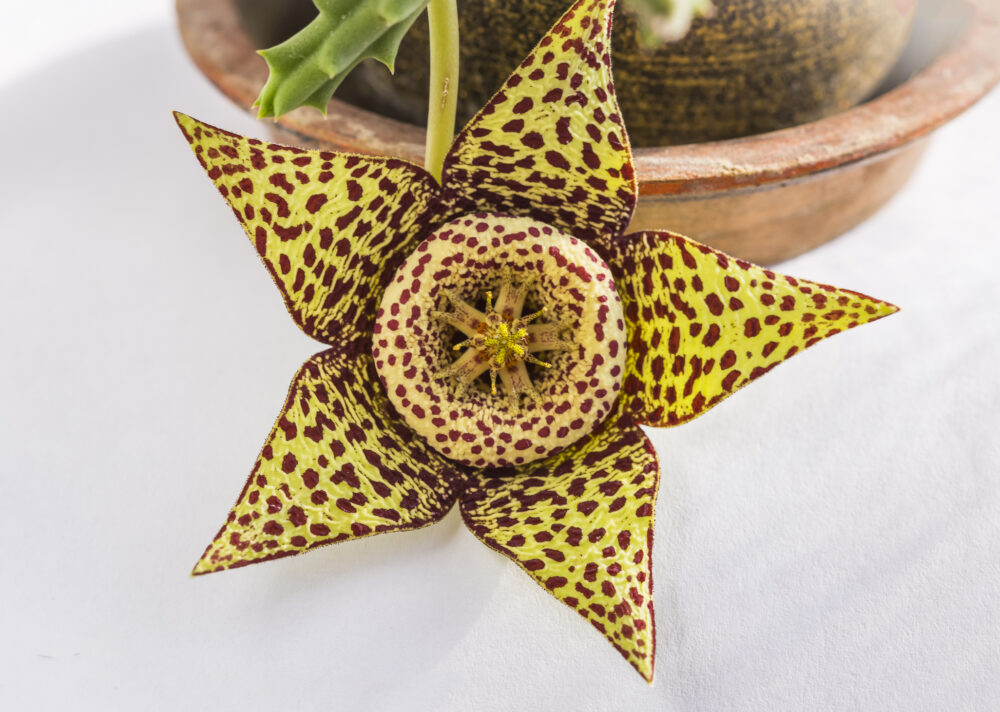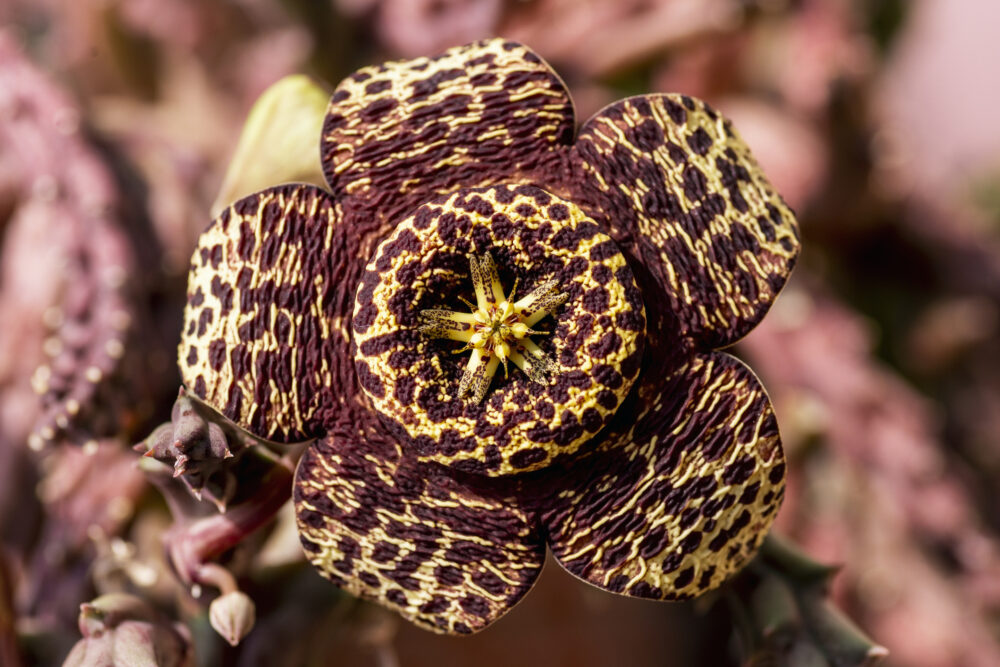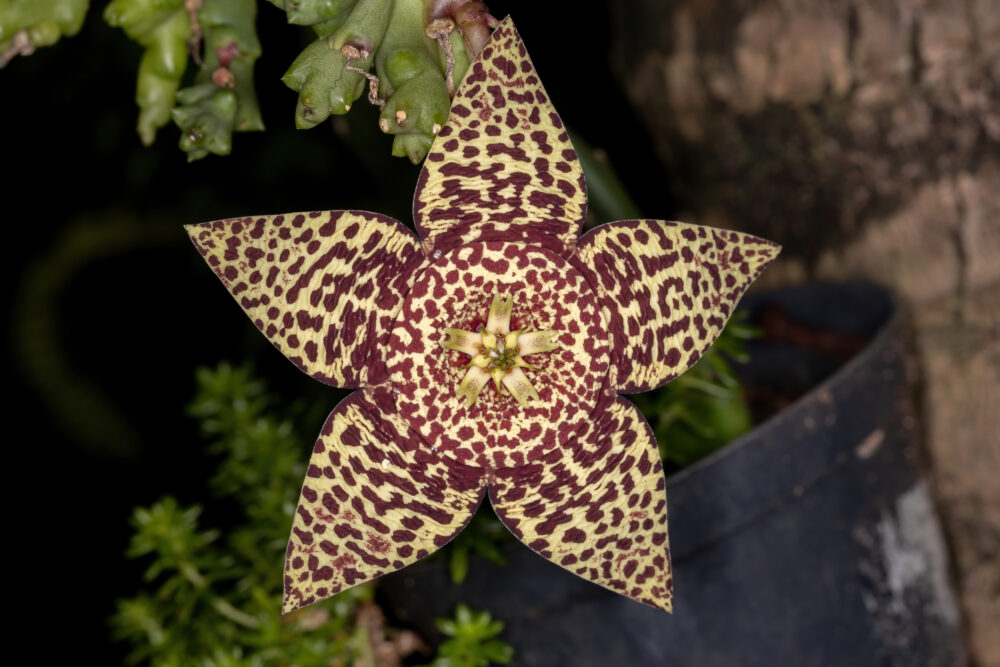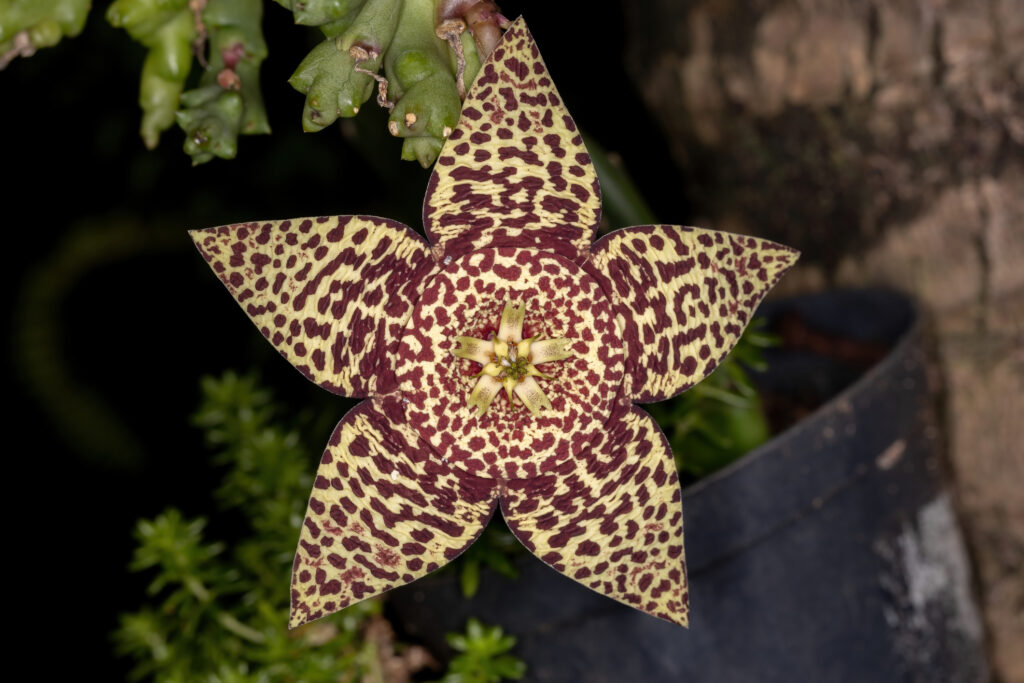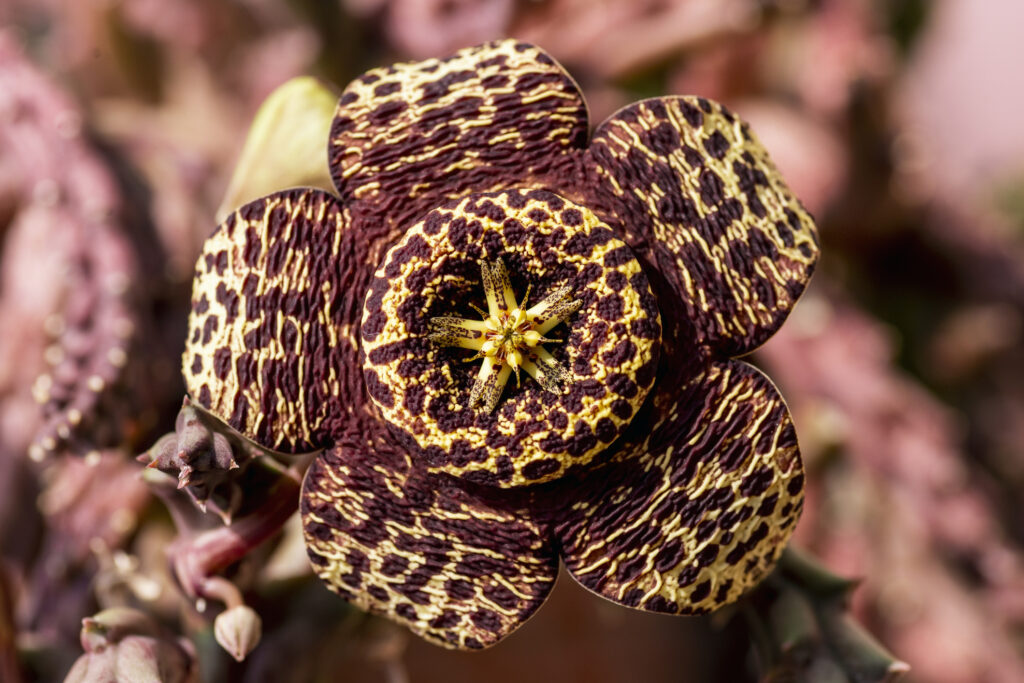Carrion Stapelia Flower: Tips on Growing & Caring for the Cactus Starfish Plant
Looking to grow a spineless succulent? You might want to try theStapelia Flower out. Even though it’s fabled to produce a foul smell, the flowers on this houseplant are charming and make this plant own a strikingly noticeable stature that overlaps other flowering houseplants.
Succulents are known to kick through tough times mostly when growing under arid climates. But the truth of the matter is your Stapelia flower will hardly pretend to keep its cool if you deprive it of the essential nurturing requirements. Keep reading to learn the basic caring tips and map out the grey areas you want to avoid when keeping up with the normal maintenance routine.
More About the Stapelia Flower
TheStapelia Flower goes by many names. Some call it the Carrion Flower, while other gardening stores label it as the Starfish plant. It belongs to what’s commonly referred to as milkweed, or the Asclepiadaceaefamily. But after modifications were made, it now falls under the Apocynaceaesubfamily.
This member of theStapelia genus is native to the tropical regions of South Africa and there are over 90 types closely related to the Starfish plant. Since Stapeliavarieties come into life form as succulents, they can cope up with tough conditions fairly well. Here are few other ecstaticStapeliavarieties you would consider owning:
Stapeliagrandiflora: What makes this succulent amuse most gardeners looking to adopt a flowering houseplant is its tensile stems that hang downwards and outside the growing pot as they age. This tufted houseplant with cactus-like features blooms a cluster of flowers that produce a conspicuous scent, and take the shape of a starfish. The flowers typicallyspan up to 6” inches in diameter. Same as most other varieties, this type can sprout while sitting inside an incubator or heated growing bench during the entire winter season.
Stapeliahirsuta: Also known as the African Starfish, this succulent type blooms large star-shaped flowers that roughly span between 5” to 15” inches wide. The middle of the flower has some stands of pink fur that attract pollinating insects. Same with most other varieties, its flowers tend to produce a foul smell. What makes it visually distinct from other types is the presenceof yellow stripes on the petals.
Stapeliascitula: Taking care of the Small Starfish is fairly easy. You’ll notice that the stems of this variety are a bit slender compared to other types in the same species that you might come across in most gardening stores. The flowers too are tinier, so if you’re looking for a miniature Stapelia type to grow indoors, this should be on your top chart list. As the flowers bloom, some maroon hairs will form in the middle to make the foliage denselypacked.
Stapeliavariegata: This type is a bit thicker compared to the African Starfish and could reach up to 6” inches tall when nourished with the right growing conditions. It blooms yellow flowers with a purple-brown pattern. This soft-stemmed succulent elongates in an erect posture and develops a few sturdy branches that make it such a wondrous houseplant.
Stapeliagigantea: There are chances you’d also find this flowering plant labeled “Zulu Giant” or the “Callion Flower” across your nearest nurseries and gardening stores. Some gardeners grow it for ground cover while others prefer when it’s resting indoors. This type is a winter-hardy houseplant from a non-cactus family and native to arid regions of Tanzania and South Africa, making it far more drought-tolerant if you weigh the Callion Flower against other flowering types in the Stapeliafamily.
StapeliaFlower Caring Tips
Flowering & Fragrance
If you’ve ever smelled theStapelia flower before, you’d agree with me that the fragrance is somewhat unpleasant. When it blooms, the flowers appear impressively tall and have a conspicuous color pattern and texture you’d hardly find on other indoor succulent plants.
It’s in fact possible to see the flowers grow taller than the entire plant. The brightly-colored flowers form at the base part of the shoots and although they tend to have a foul smell, most gardening hobbyists seem to have a strong impulse towards owning this houseplant.
Watering & Feeding
No matter how huge you want to see yourStapelia flower grow, don’t be tempted to go overboard with its watering needs. Desert succulents have adaptations to help them store water so they can survive when the moisture levels hit a record low.
You want to keep the soil gently moist and leave it to dry before watering your Stapeliasucculent again. If water gets stuck deep beneath the soil for too long, that could cause the roots to rot.But regardless of how dreadful the effects of overwatering could affect your Stapelia flower, the plant still thirsts for moisture quite constantly, in contrast to most other cacti plants.
It needs to be watered ideally once every two weeks during summer. Reduce the intervals to once per month when it’s spring. You’ll need to space out the watering intervals even further during winter or neglect it throughout the entire season. If the stems begin to shrivel due to neglect, you can moisten the soil sparingly.
Light & Temperature
Like other commonly grown succulents, theStapelia flower likes its environment warm and slightly humid. I’d vouch for growing this tropical plant in a container since it will be much easier to move it inside where you can calibrate the room temperature during winter.
It does well under room temperature. If the frosting conditions get overly unbearable to this flowering houseplant, make sure the room temperature doesn’t fall below 10 degrees Celsius. Most of all, keep the plant dry for the longest part of the winter season except for when it begins to show some pressing signs of wilting.
And while it’s essential to keep the temperatures at bay with this plant’s unique demands, you don’t want to place the growing medium anywhere close to a heater. Using heated benches and covers, however, can make the most fragile parts of this houseplant survive through the winter months.
Even though it’s a desert succulent with a potent thirst for the full sun, it’s best to grow it under some partial shade. A pleasant and ambient temperature for this flowering beauty should ideally range anywhere between 25-35 degrees Celsius. Low light conditions tend to block the chlorophyll production process, causing the distinct tone on the foliage that makes it visually pleasing to fade off.
Soil & Transplanting
Same to other flowering succulent plants, the Stapelia houseplant needs normal soil that firmly drains water. It should be permeable enough to allow water to drain with ease. But since there’s no need for using fertilizer on this plant, I would suggest using a cactus potting mix that’s amended with a sizeable portion of organic matter.
Depending on which option suits you best, you can choose to purchase the cactus mix or make it yourself. I often prefer to go the DIY route, especially when dealing with flowering succulent plants. It’s cheaper too. To prepare the cactus mix, you’ll need to use about 5 parts of normal potting soil and mix it with two parts of pumice or perlite, to help the soil retain some moisture a bit longer.
You also want to amend the mixture with coconut coir. Coir helps keep the pH levels from being too acidic. It has an almost neutral pH that ranges between 5.5 to 6.8, compared to peat moss can turn out to be slightly acidic at times. Same as pumice or perlite, coir mulch helps retain moisture. During peak maturity stages, yourStapeliaflower will spread over the entire growing pot.
Once your Stapelia Flower grows overly tall and wide, you’ll ultimately be prompted to transplant it into a bigger container. And the best time to carry this exercise out is during spring. Use a growing pot with a wider diameter so the stems can elongate further towards any direction they wish. To speed up the rate of drainage, use a layer of pebbles in the bottom part of the growing medium before filling it with the potting soil.
How to Propagate the Stapelia Flower

So, whichever method you want to work with, it’s still possible to get you a mature and poised Stapeliaflower. Seeds sowed from the flower would take few days to sprout. All you need to do is dissect stem cuttings that are mature and seem not to have any signs that suggest they’re infested with pests or suffering from infectious diseases.
For this method to work out without hurdles, you want to put these pointers into practice:
- Source the stem cuttings from the mother plant around the spring season when the growth hormones are active.
- Leave them outside overnight so the open wounds can heal.
- You can opt to buy a cactus potting mix or choose to make one yourself using the hints we gave out right under the soil and transplanting section.
- Make sure to cross-check the drainage capacity of the potting mix you want to propagate your stem cuttings or seeds with. If the soil remains soggy for long, you risk losing your plant to root rot. And it’s no reason why the best time to propagate yourStapeliaFlower is during summer when the temperatures are warm enough to help the soil dry up much quicker.
- Don’t cover the container after planting the cuttings. Water the soil gently and place the growing medium somewhere with temperatures ranging between 15 to 18 degrees Celsius.
Common Pests & Diseases
One major issue that yourStapeliaFlower dreads the most is overwatering. The effects of leaving this houseplant in soggy soil are barely reversible. The base part of the plant will begin to turn black and mushy. Right off the bat, that indicates your houseplant is beginning to rot.
If the signs don’t look serious, you can prevent losing the entire plant by dissecting the affected areas. In the event where the damage is whacking, then it’s best to cut a few cuttings and propagate them to get new Stapelia Flower plants.You also don’t want to neglect its watering needs for long, except for the winter season when the growth hormones go into dormancy.
Underwatering this houseplant will cause the stems to shrivel and become flaccid. Use a growing pot with enough drainage holes
Yellow spots forming on the stems could be a sign that yourStapeliaFlower is infested with spider mites.
Use a cotton swab that’s dipped in isopropyl alcohol to wipe off the affected areas. Watch out for mealybugs especially if you’re fond of overwatering your houseplant. They tend to suck the juicy sap meant to help succulents thrive through arid climates, and leave a sticky whitish residue on the surface of the stems.
